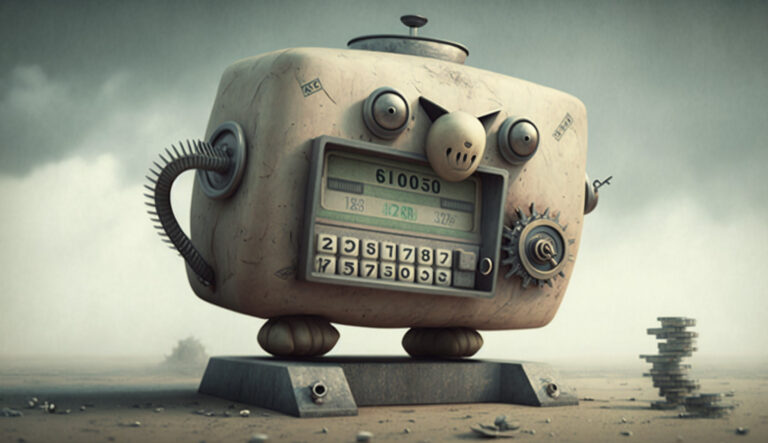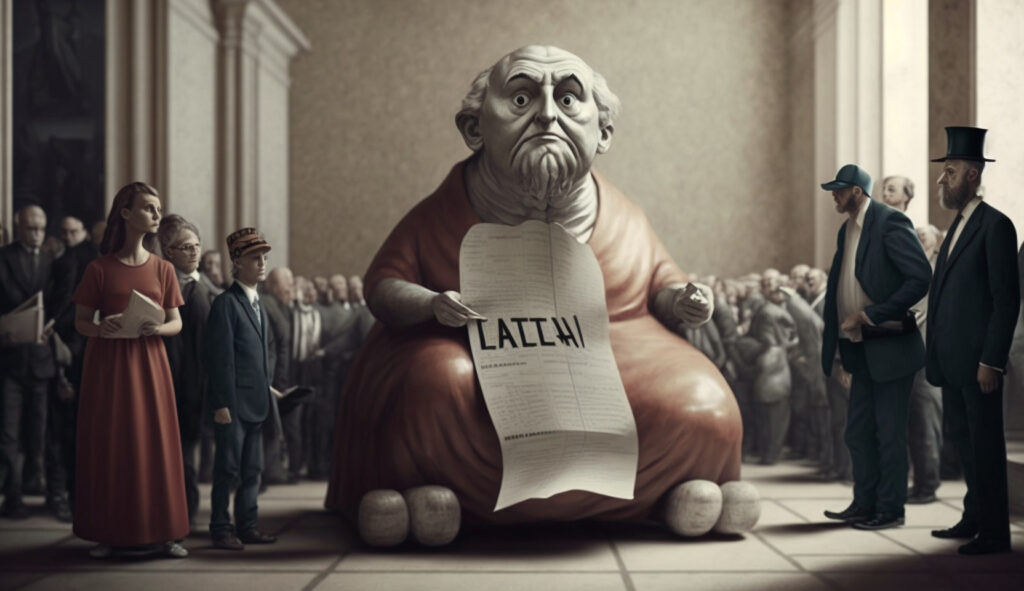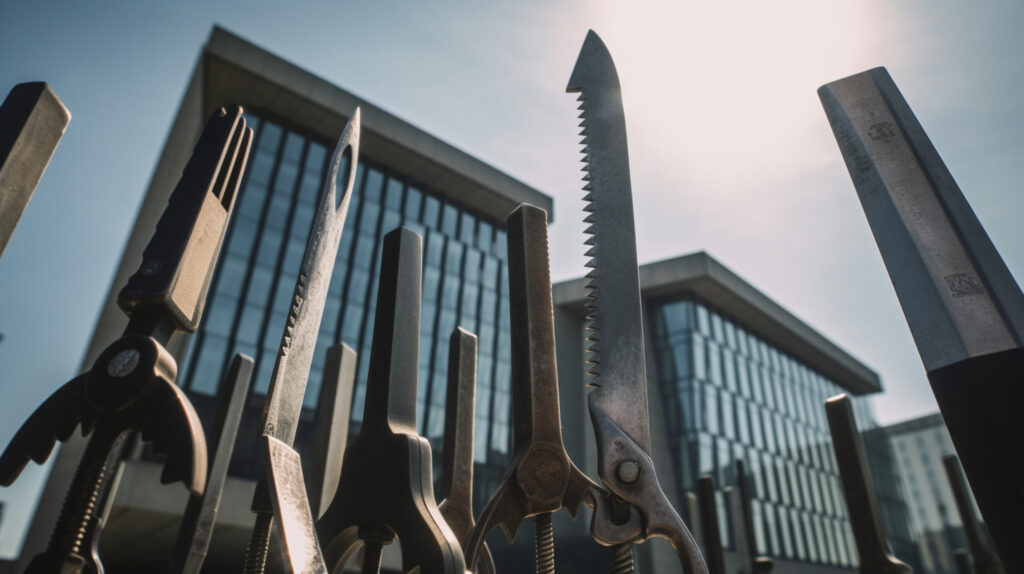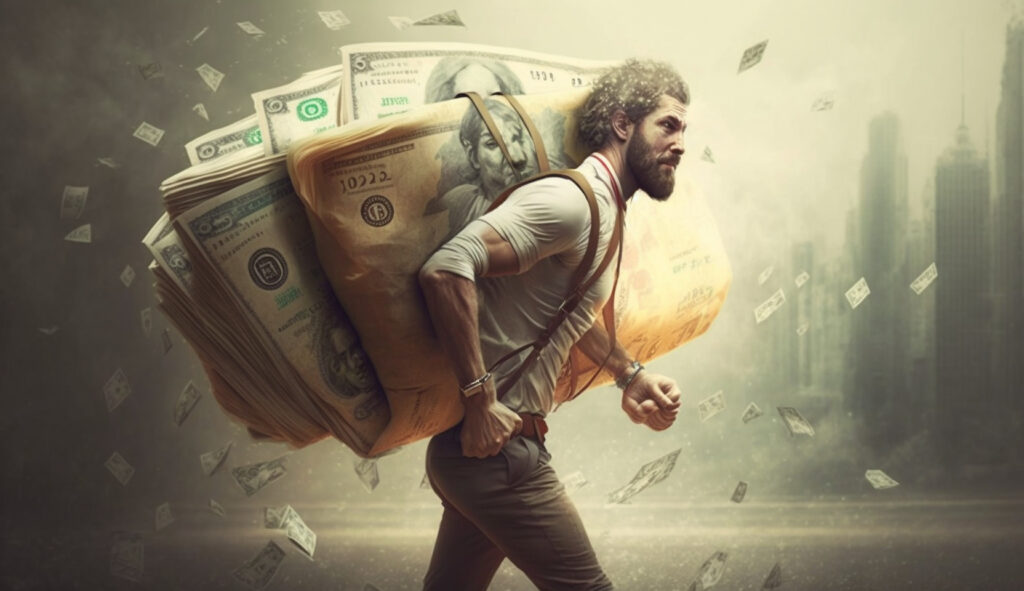
Our economy is a vast, complicated machine that requires constant fine-tuning. At the heart of this process is the government’s fiscal stance or how it manages its finances. Whether the government is spending more to stimulate a sluggish economy or cutting back to prevent overheating, this balancing act is critical for maintaining economic stability. Automatic stabilizers, or in-built economic controls, play a vital role, helping to soften the blow during economic downturns and cool things down in times of rapid growth. However, the size of a country’s deficit may not always accurately reflect its fiscal stance. Yet despite these challenges, fiscal policy remains a crucial tool for steering the economy toward growth and stability. Understanding its complexities and nuances is key to making informed economic decisions.
What is Fiscal Stance?
When we talk about a country’s fiscal stance, we’re referring to how the government manages its checkbook. If they’re spending more than they’re making, we call that an expansionary stance. This usually happens when the economy is in a slump, and the government is trying to kickstart growth. This could involve increased spending on things like infrastructure projects or tax cuts to give people more money to spend.
On the other hand, if the government is trying to cool down an overheating economy, it might cut spending or raise taxes. This is known as a contractionary stance. The aim here is to pull back on the economy’s reins to keep inflation in check and maintain stability.
Automatic stabilizers are like the economy’s autopilot. They kick in without needing any new laws or policy changes. For instance, when the economy slumps, automatic stabilizers help push the government toward an expansionary fiscal stance. With lower incomes, tax revenues drop. As a result, government spending goes up as more people qualify for things like unemployment benefits or welfare. In effect, the government is pumping more money into the economy to help get it back on its feet.
When the economy’s doing well, these automatic stabilizers act in the opposite direction. As people make more money, tax revenues go up. As a result, government spending drops because fewer people need support like unemployment benefits. This results in the government pulling money out of the economy, preventing it from overheating. So, the country’s fiscal stance and automatic stabilizers are like two sides of the same coin. Automatic stabilizers help guide the fiscal stance, steering the economy based on its current state. Automatic stabilizers are vital components of economic policy and fiscal management. They serve as self-regulated mechanisms within a nation’s economic system. Their role is to counterbalance economic fluctuations without the need for new legislation or additional intervention from policymakers.
What are Automatic Stabilizers?
Think of automatic stabilizers as the economy’s thermostat. They intuitively respond to changes in economic conditions. When the economy cools down during periods of recession, these mechanisms spring into action. They provide warmth and stimulate economic activity. Conversely, they help regulate and cool down the growth pace when the economy heats up. One of the key automatic stabilizers is unemployment benefits. During an economic slowdown or recession, job losses increase, leading to a rise in people claiming unemployment benefits. In short, these benefits serve as a buffer. They provide a safety net for those affected and help to sustain consumer spending, which is critical for economic recovery.
Taxation, particularly progressive tax systems, is another important automatic stabilizer. In a progressive tax system, individuals and businesses pay more taxes at higher rates as their incomes rise. This system acts as an automatic brake during economic booms, collecting more taxes and thus tempering the pace of growth. In periods of economic downturn, lower incomes result in reduced tax collections, effectively leaving more money in the pockets of businesses and individuals. This injects additional cash into the economy and can help drive economic activity.
Similarly, welfare programs like food stamps and housing assistance automatically kick in when economic conditions deteriorate. They support low-income individuals and families, helping bolster consumer spending when times are tough.
In essence, automatic stabilizers play a critical role in mitigating the impact of economic downturns and keeping the economy steady. By intuitively responding to economic climate changes, they help soften the economic cycle’s highs and lows, contributing to overall economic stability and resilience.
Assessing a Country’s Fiscal Strategy Based on Its Deficit: Challenges and Implications.
A big question that comes up is how well the size of a country’s deficit shows whether the government is trying to grow the economy (expansionary fiscal policy) or slow it down (contractionary fiscal policy). This is a key issue for those making decisions about the economy. The reason is, a lot of things can change the deficit that have nothing to do with what the government is actually doing.
For instance, automatic stabilizers can change the deficit without the government doing anything. When the economy isn’t doing well, people pay less in taxes, which can make the deficit bigger. So, if you just looked at the deficit, you might think the government is trying to grow the economy when it’s not really doing anything different. This can lead to wrong assumptions about what the government needs to do next. To solve this problem, economists often use what’s called the structural or cyclically adjusted budget deficit to judge a country’s financial strategy. This number shows what the deficit would look like if everyone who wanted a job had one (full employment) or if the economy was producing as much as it possibly could (full potential output).
For instance, if we look at periods where a lot of people were out of work, like in 2009-2010 when about 9-10% of people in the U.S. and Europe didn’t have jobs, we would expect that the deficit in these countries would go down a lot if everyone was working. That’s because when people are working, they pay more taxes. In turn, the government spends less on social support like unemployment benefits. There’s another reason why the actual deficit, the money the government lacks, might not be the best way to gauge a country’s financial strategy, or fiscal stance. This reason is linked to the difference between two types of interest rates: real and nominal. Also, it’s about how adjusting for inflation affects deficits.
When we study a country’s economy, we usually count interest payments on debt as part of the government’s spending. However, it might be better to look at the interest payments after taking inflation into account, which are known as real interest payments. This method gives us a clearer picture of how inflation is actually reducing the value of the debt that needs to be paid off. In addition, it’s important to remember how crucial automatic stabilizers, like income tax, VAT, and social benefits, are when it comes to planning the country’s financial strategy. These automatic stabilizers become especially important when the economy isn’t doing well because they respond to changes in output (how much the country is producing) and how many people are employed.
As people pay less in taxes and more people get unemployment benefits, this acts like a boost to the economy. This helps lessen the impact and make the response to a drop in economic output less severe. The good thing about these automatic stabilizers is that they kick in without needing new laws or policies – they work based on rules that are already in place. Because of this, the economy is better able to handle shocks and this helps to reduce big swings in jobs and output.
On top of these automatic stabilizers, governments also use deliberate measures, like changing taxes or how much they spend, to actively control the overall demand in the economy and keep things stable. These measures aim to provide extra support and stability during times when the economy is going through a lot of ups and downs. But an important question is why, despite all this, fiscal policy can’t fully control overall demand and make sure that everyone who wants a job can get one.
In conclusion, when you take into account all these factors – the subtleties of real and nominal interest rates, the role of adjusting for inflation, and the impact of automatic stabilizers and deliberate fiscal adjustments – it’s clear that just looking at government deficits doesn’t give the full picture of fiscal policy and all its intricacies.
Why Executing Fiscal Policy is Difficult?
There are some big challenges when it comes to using fiscal policy (how the government adjusts its spending and taxes) to balance overall demand in the economy. And unfortunately, these problems can’t be totally fixed. First, the people making policy decisions need more up-to-date and detailed information about what’s going on in the economy. The problem is, it takes time to realize when the economy is slowing down. It’s a bit like trying to drive using only your rearview mirror. By the time you get economic data, it’s already out of date, and sometimes it even gets revised later on. This makes it really hard to understand exactly what’s happening in the economy right now.
Second, once policymakers decide they need to do something, it takes time to put those plans into action. For example, if the government wants to spend more on building roads and bridges, the whole process of planning and then actually doing the work takes a while.
Third, even after policymakers implement their plans, it takes more time for those actions to start affecting the economy. This delay makes it harder to balance demand using fiscal policy quickly. In short, these delays (realizing there’s a problem, putting plans into action, and then waiting for those actions to affect the economy) make it hard to use fiscal policy to balance demand perfectly. These delays, along with how complex the economy is, make it tough to carry out fiscal policy quickly and efficiently.
Time and unpredictability are major factors to think about when it comes to the economy. For instance, you might have a situation where a government decides to spend more money to boost the economy. But then, at the same time, there’s an unexpected increase in business investment or a sudden rise in demand for the country’s exports. Economic models that try to predict the future aren’t always accurate, so they can’t be entirely trusted to guide these big decisions.
Also, when the government announces plans to change fiscal policy, this can affect how businesses and consumers behave. For example, they might decide to spend more or less money. These changes can amplify the effects of the government’s increased spending. This makes it really hard to figure out exactly how much the government needs to adjust its spending and taxes to reach full employment, because there are so many moving parts.
In short, the economy is uncertain and complex. How it behaves and how people respond to policy changes can be hard to predict. This makes getting fiscal policy just right very difficult. Plus, economic models aren’t always accurate. This adds another layer of difficulty for policymakers. They face challenges when deciding how and when to adjust fiscal policy.
Are There Any Other Issues?
Imagine a government dealing with high unemployment and high inflation in a country. If it tries to boost demand to get more people jobs, this could make the job market too competitive. This might push up wages and prices, which would make inflation worse. This dilemma can make policymakers hesitate to change fiscal policy further because it might cause even more inflation.
Moreover, if the government is already spending more than it makes (this is called a budget deficit) and it needs to spend even more to stimulate the economy it might cause problems. Financial markets might start worrying about how big the deficit is, compared to the total value of goods and services produced in the country (GDP). These worries could push up the interest rates on government debt and create political pressure to reduce the deficit.
Another tricky part is determining when the economy is at “full employment.” This isn’t just when everyone who wants a job has a job. It also considers how productive these workers are and whether they can work for the wages offered. So, if the government boosts demand when the economy is already at full employment, it could lead to problems. Suppose the problem isn’t a lack of demand but a lack of resources like labor. If that’s the case, trying to boost demand with fiscal policy won’t work and might worsen inflation.
Lastly, there’s the risk of something called “crowding out”. This is when the government borrows a lot of money and leaves less for private companies to borrow. This could lead to less investment and slower economic growth. It could also make borrowing more expensive and discourage companies from taking on projects that could have made them money. However, economists are still debating whether crowding out happens.
Did you find our article informative? Don’t forget to explore our other pieces. We’d love your thoughts about this article in the comments section below.
Do The Smart Thing. Subscribe!
Get notified about our new articles and insights.




